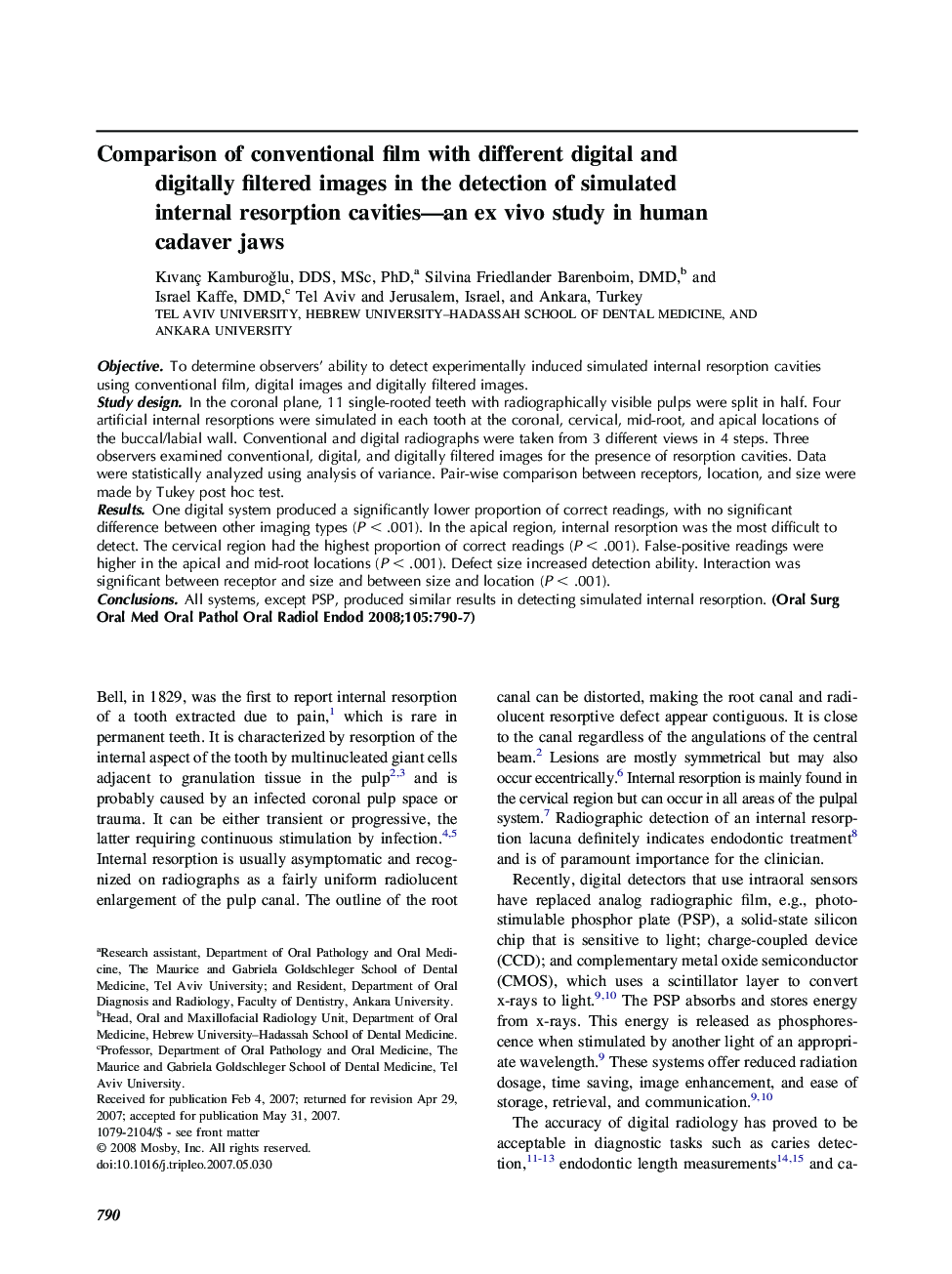| Article ID | Journal | Published Year | Pages | File Type |
|---|---|---|---|---|
| 3168680 | Oral Surgery, Oral Medicine, Oral Pathology, Oral Radiology, and Endodontology | 2008 | 8 Pages |
ObjectiveTo determine observers' ability to detect experimentally induced simulated internal resorption cavities using conventional film, digital images and digitally filtered images.Study designIn the coronal plane, 11 single-rooted teeth with radiographically visible pulps were split in half. Four artificial internal resorptions were simulated in each tooth at the coronal, cervical, mid-root, and apical locations of the buccal/labial wall. Conventional and digital radiographs were taken from 3 different views in 4 steps. Three observers examined conventional, digital, and digitally filtered images for the presence of resorption cavities. Data were statistically analyzed using analysis of variance. Pair-wise comparison between receptors, location, and size were made by Tukey post hoc test.ResultsOne digital system produced a significantly lower proportion of correct readings, with no significant difference between other imaging types (P < .001). In the apical region, internal resorption was the most difficult to detect. The cervical region had the highest proportion of correct readings (P < .001). False-positive readings were higher in the apical and mid-root locations (P < .001). Defect size increased detection ability. Interaction was significant between receptor and size and between size and location (P < .001).ConclusionsAll systems, except PSP, produced similar results in detecting simulated internal resorption.
